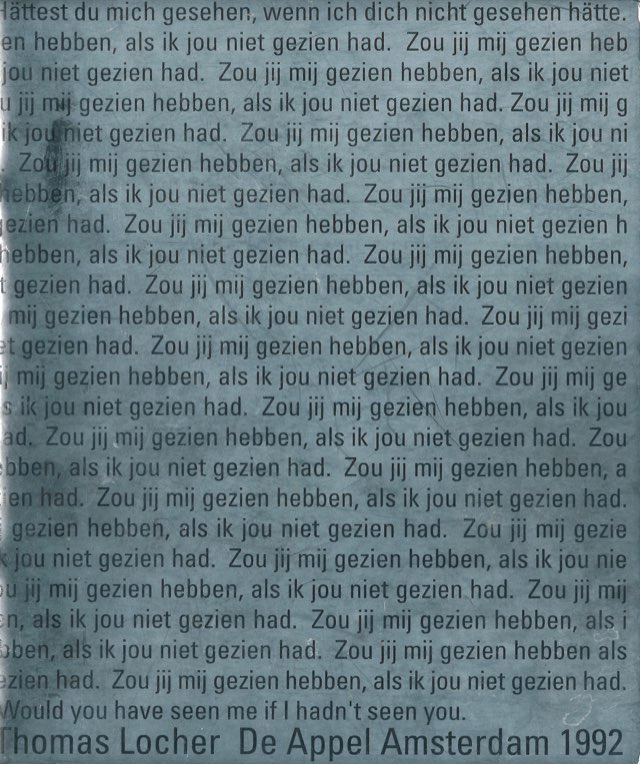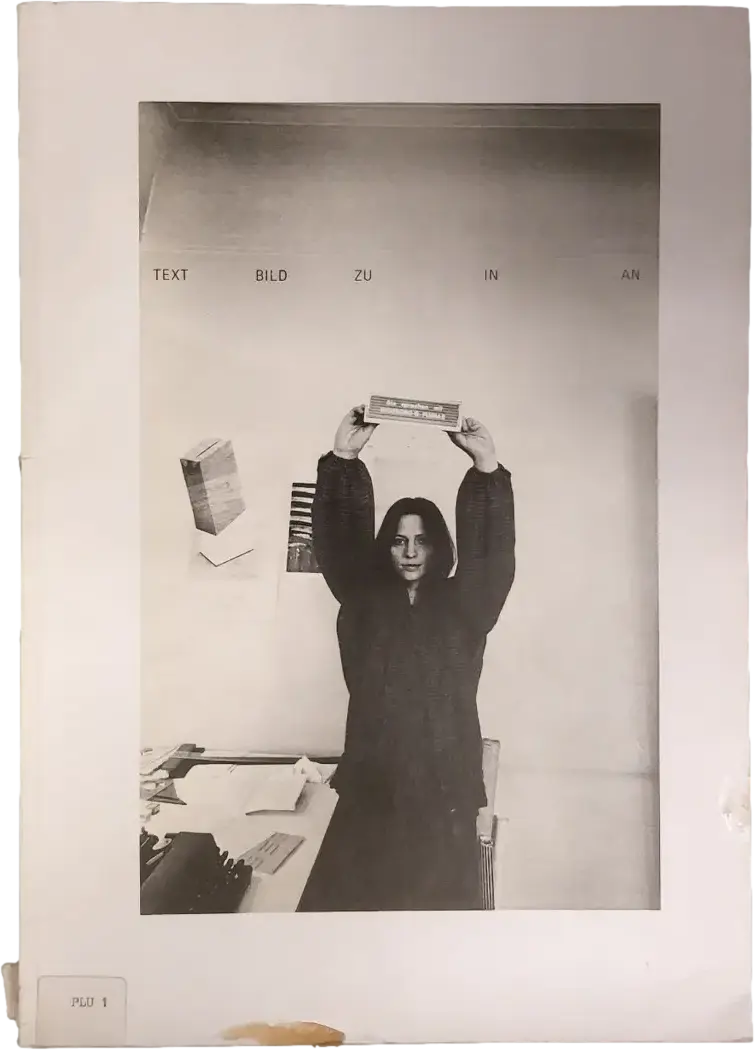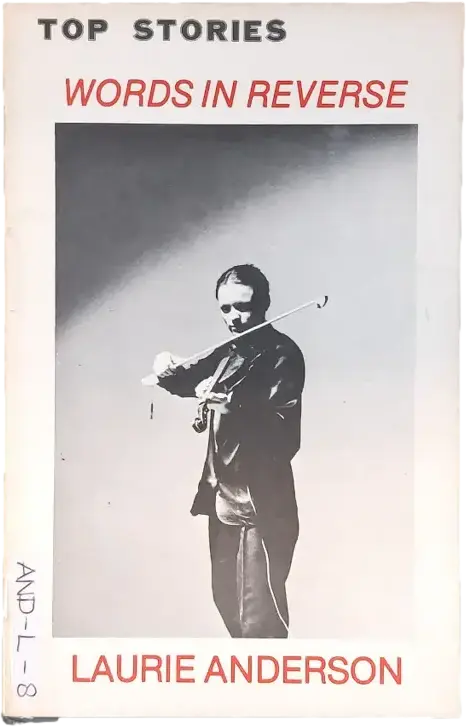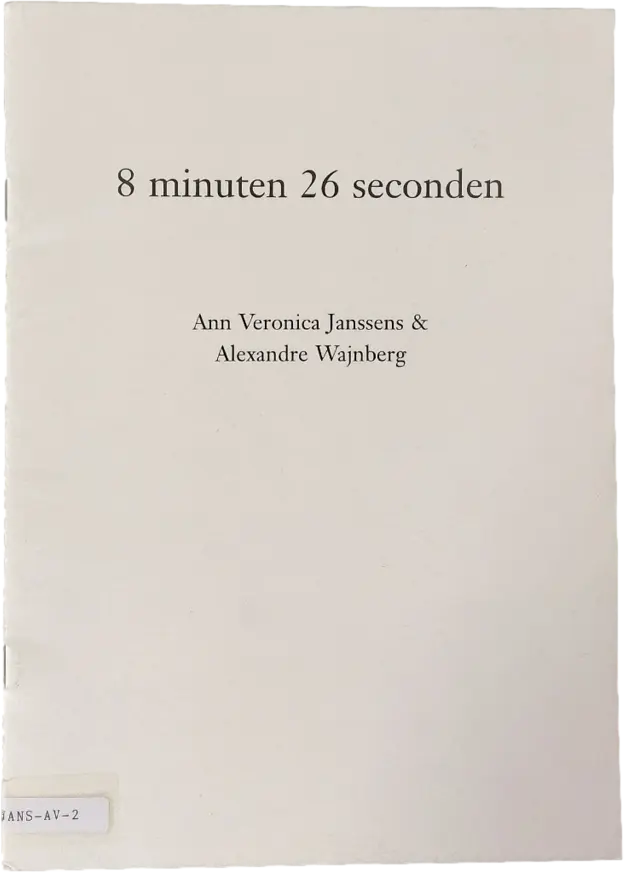Thomas Locher "Thomas Locher"
11.04–24.05.1992
de Appel, Prinseneiland 7, Amsterdam
de Appel, Prinseneiland 7, Amsterdam
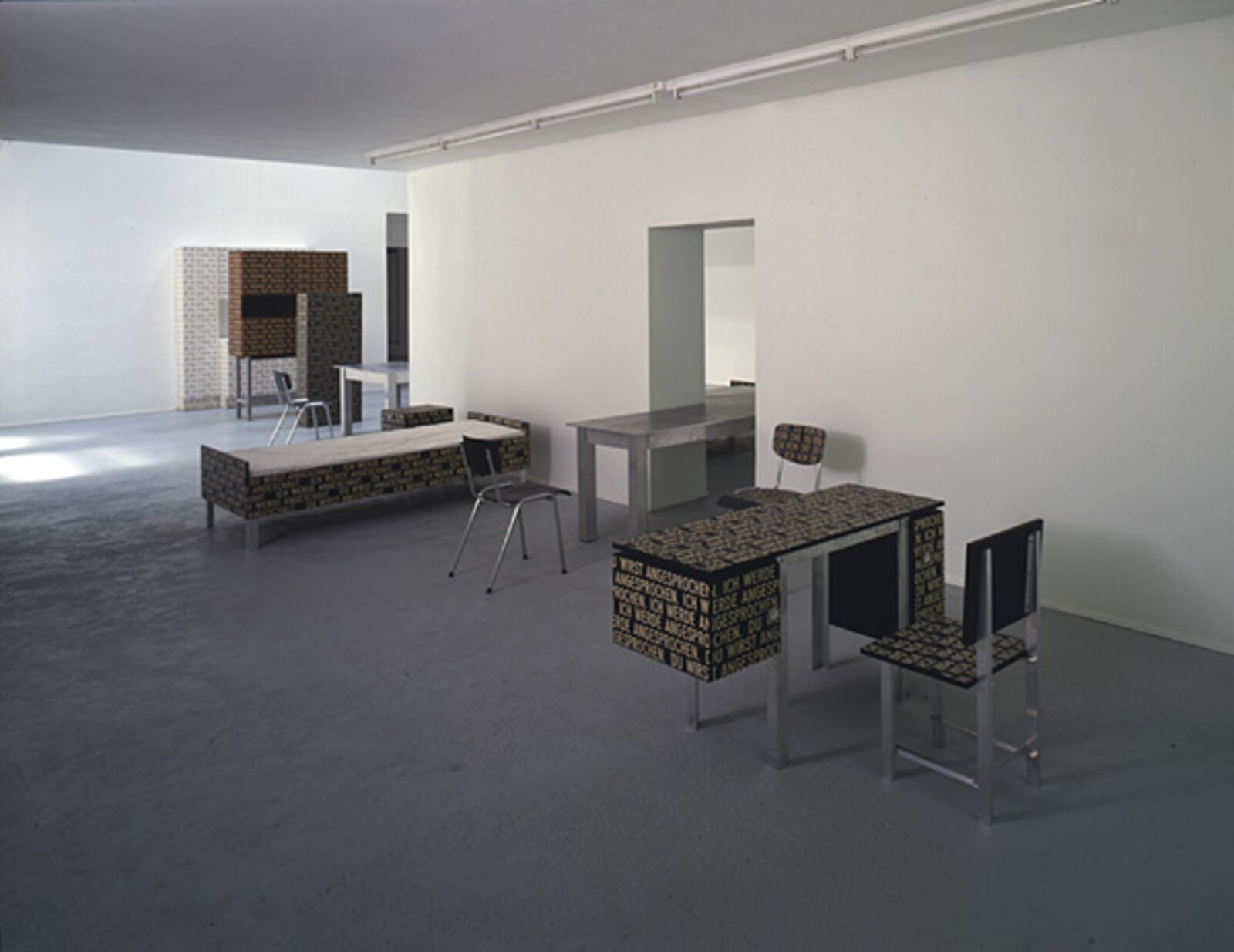
F.f.t.b.: Zwei Schreibtische mit zwei Stühlen, 1992; Zwei Stühle, 1991; Kleine Hermeneutik des Schweigens, 1992 ; Zwei Betten und zwei Nachtkästchen, 1991; Kleine Hermeneutik des Gesprächs, 1991; Hochschrank, 1992; Schrank, 1990; Küche, 1991
© Cary Markerink, Amsterdam
© Cary Markerink, Amsterdam
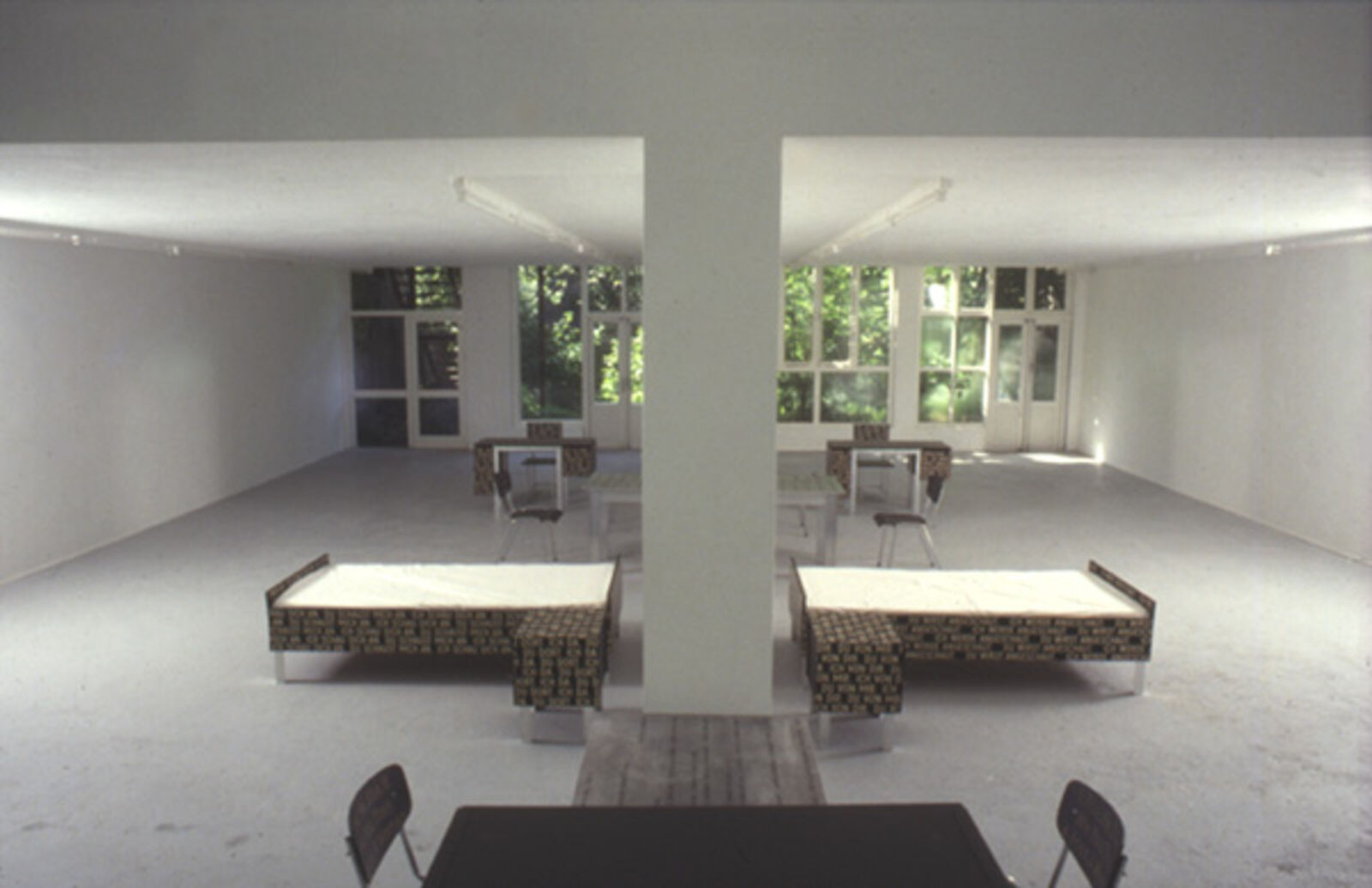
F.f.t.b.: Kleine Hermeneutik des Gesprächs, 1991, Zwei Betten und zwei Nachtkästchen, 1991, Kleine Hermeneutik des Schweigens, 1992, Zwei Stühle, 1991, Zwei Schreibtische mit zwei Stühlen, 1992
© Cary Markerink, Amsterdam
© Cary Markerink, Amsterdam
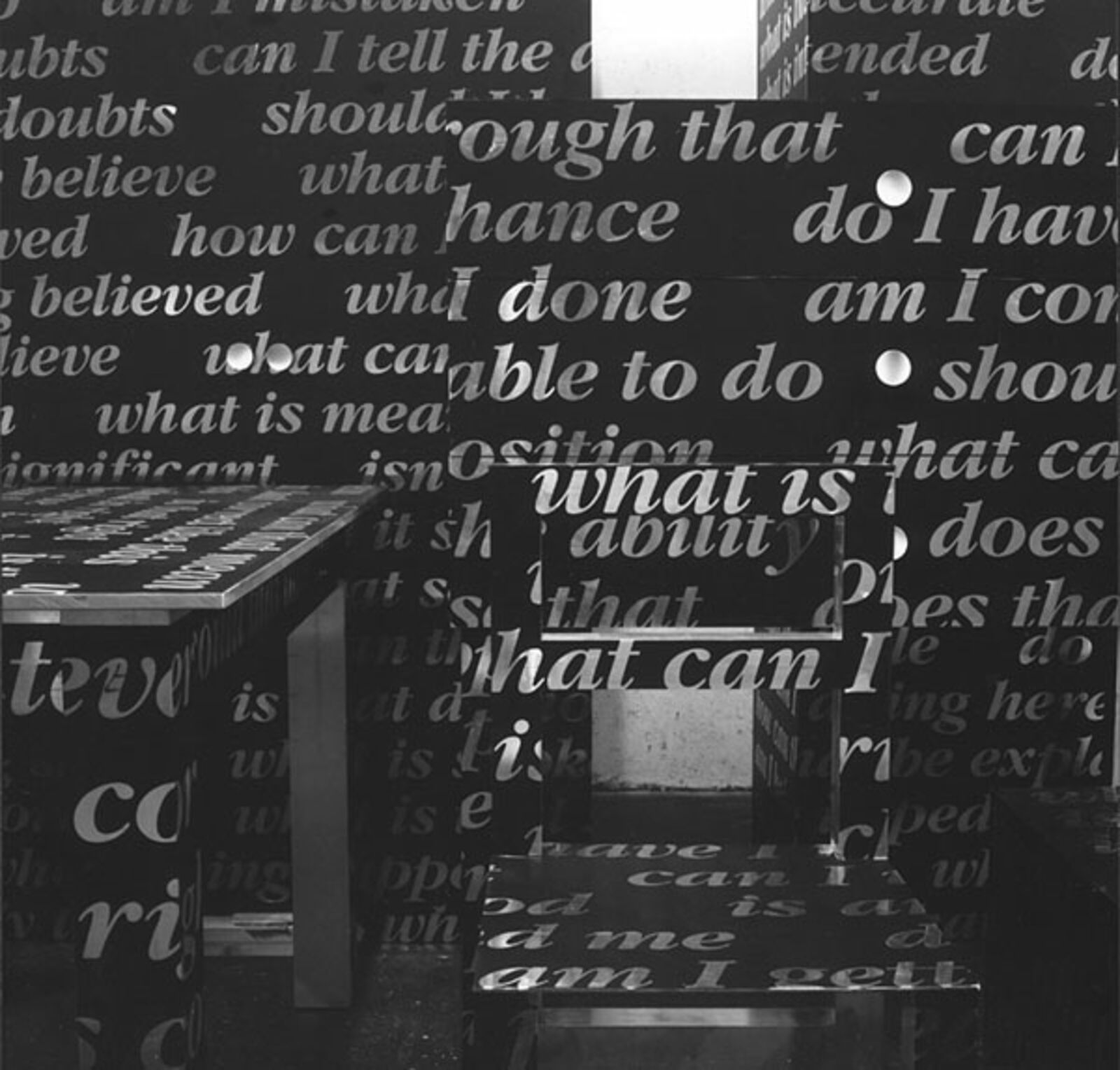
III
© Cary Markerink, Amsterdam
© Cary Markerink, Amsterdam
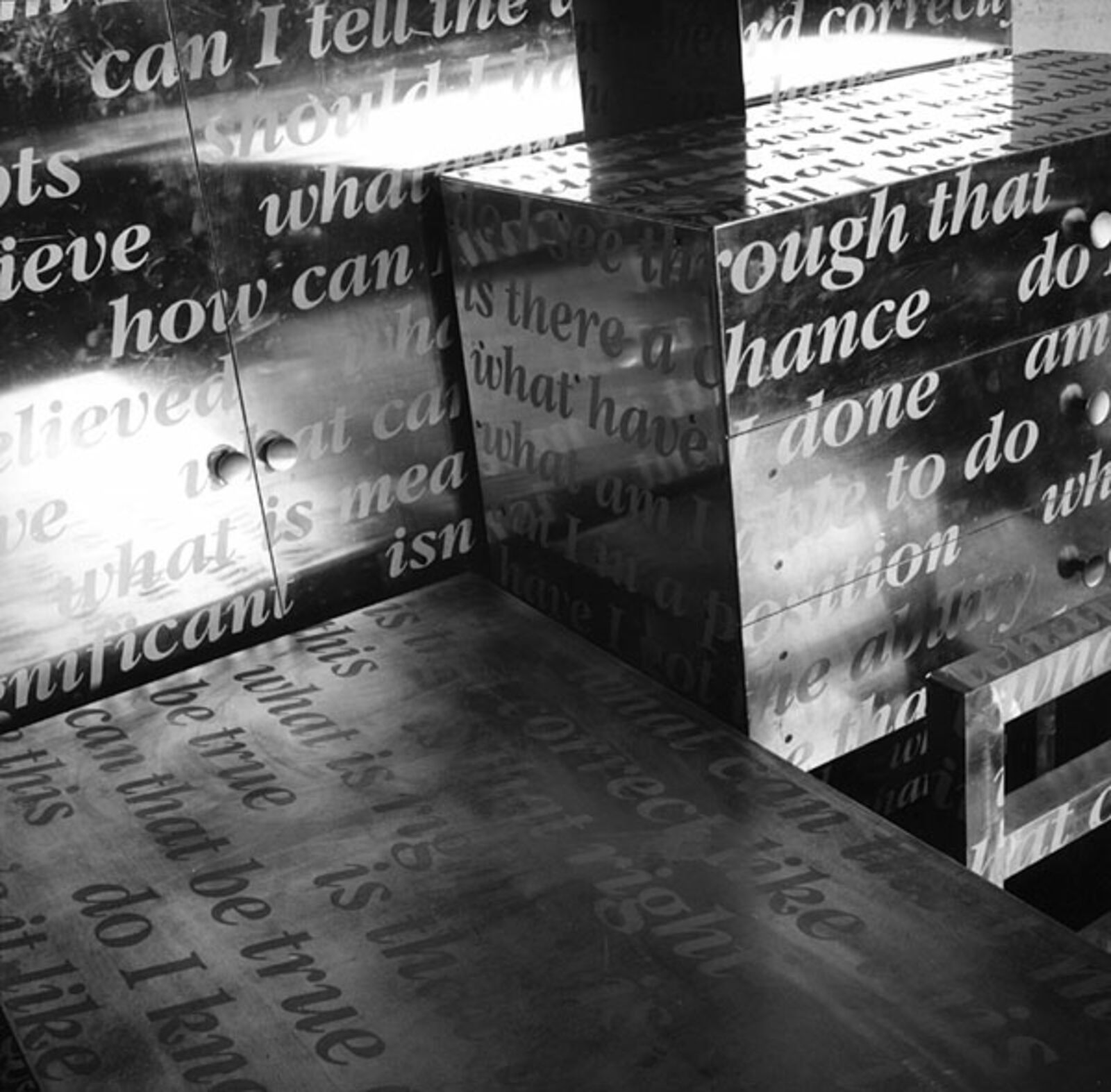
IV
© Cary Markerink, Amsterdam
© Cary Markerink, Amsterdam
‘The following conversation occurs in Lewis Carroll's Through the Looking Glass: 'When I use a word', Humpty Dumpty said, 'it means just what I choose it to mean-neither more nor less'. 'The question is', said Alice, 'whether you can make words mean so many different things'. 'The question is', said Humpty Dumpty, 'which is to be master-that's all'. This one dialogue contains every plausible standpoint on language, its meaning and who determines that meaning. Thomas Locher is an artist, and he works with concepts like those we communicate to one another in words and sentences. He regards the analysis of these concepts as an absolute precondition for thinking or talking about the models and representations of reality that art offers us. And since he finds 'the philosophical discussion not particularly illuminating', he expresses that discussion in a visual form within the space of art. Before Locher, conceptual artists like Barry, Weiner and Kosuth had already introduced systems of language and thought into art. Locher has found inspiration especially in Kosuth's 'ontological' analyses and mode's. In Locher's word pieces, the subject matter is often ordering and classification, expressed in series of concepts. But he also focuses attention onto ways of reading and perceiving, and onto sequences and systems, by placing numerals and signs in such a way that the spectator is forced to take a step backwards. For Locher's primary aim is not to provide 'aesthetic enjoyment', but to provoke us to take a distance from that aesthetic experience. He aims to raise questions about what the spectator thinks he is seeing and why that ‘thing' actually exists. Locher's placing of his objects can therefore not itself be aesthetic. Rather, it quickly assumes an encyclopedic character: a row of furniture, one article of each type. The spectator who would prefer to muse on this 'dictionnaire des idées reçues' is immediately frustrated by the texts carved into the surface. These all have a single theme: the act of mutual inspection. On the ground floor the associative possibilities are thus restricted. On the upper level, however, there drifts an endless cloudscape of questions concerning the subject and what makes the subject a subject. A word of warning to our visitors: there are no armchairs or day-beds for your comfort here, nor does the other furniture look all that inviting.’ (Invitation text by Saskia Bos)
Catalogue:
Thomas Locher, 1992. Text: Thomas Locher. Dutch, German & English. Bio- & bibliography included. 24 Pages: 7 b.w., 21.3 x 25 cm. Softcover. Design: Irma Boom. ISBN 90 73501 14 8. SOLD OUT
See also
